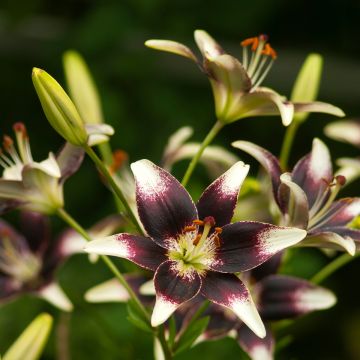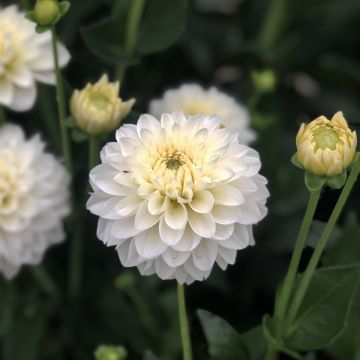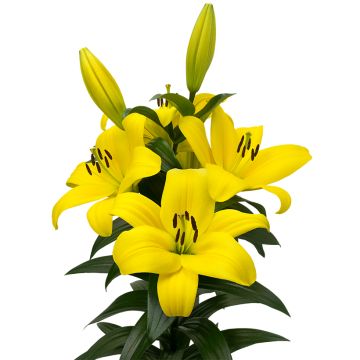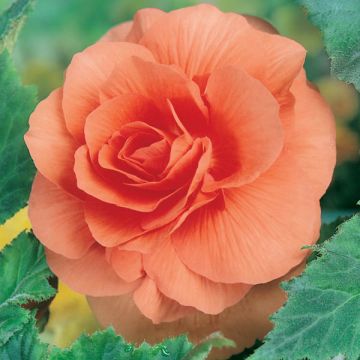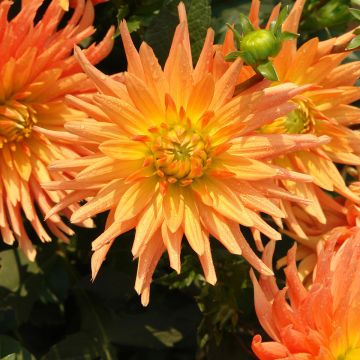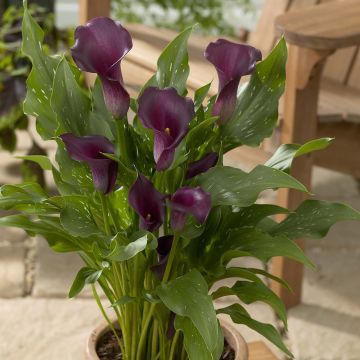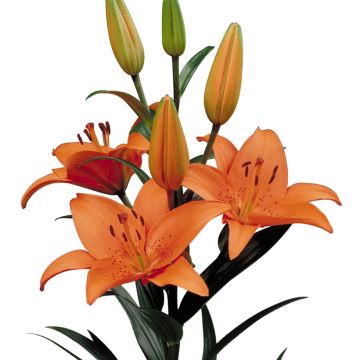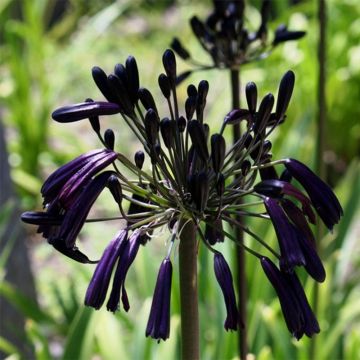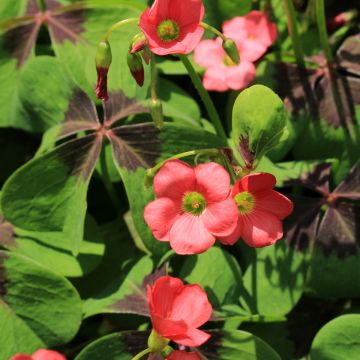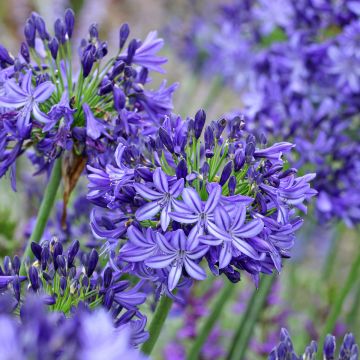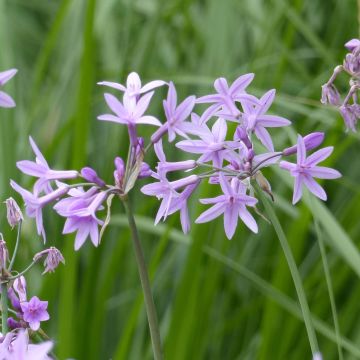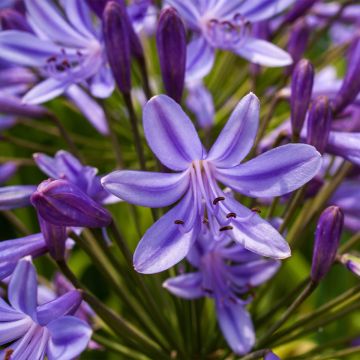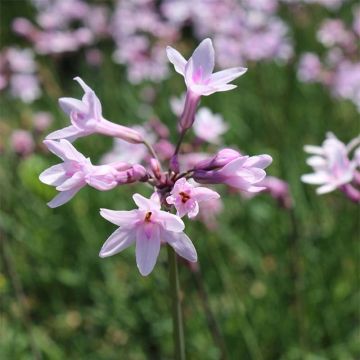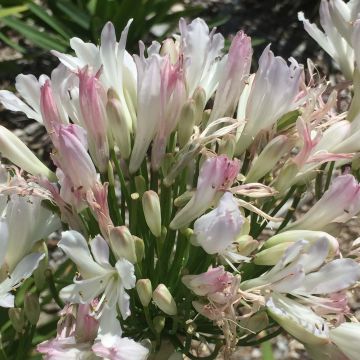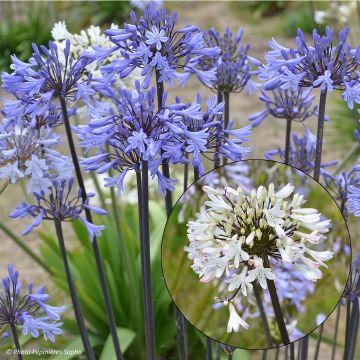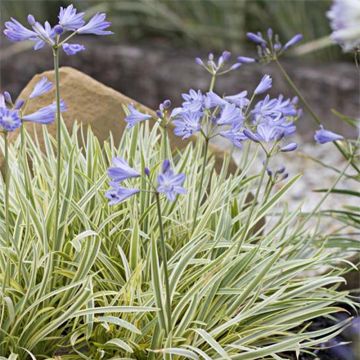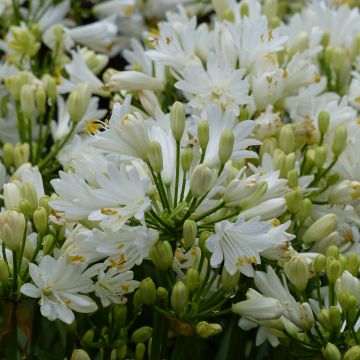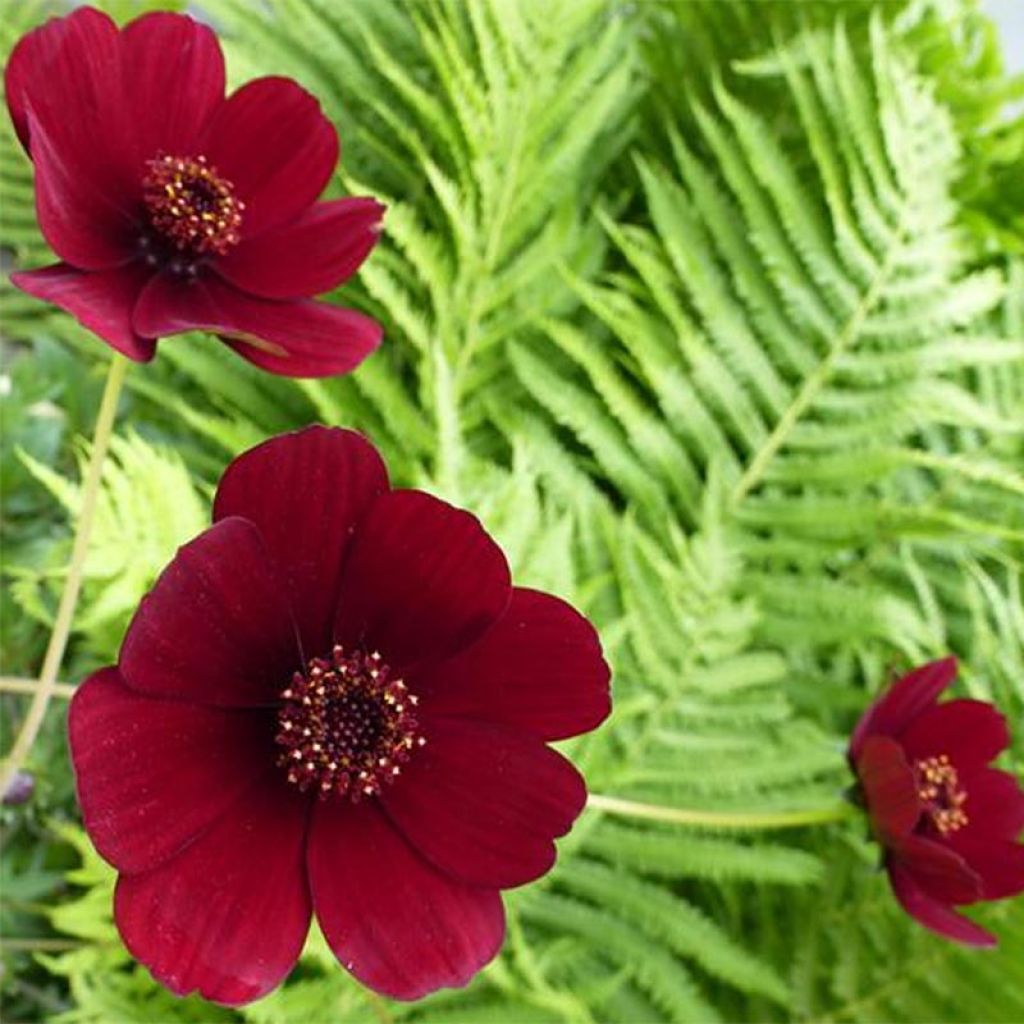

Cosmos atrosanguineus
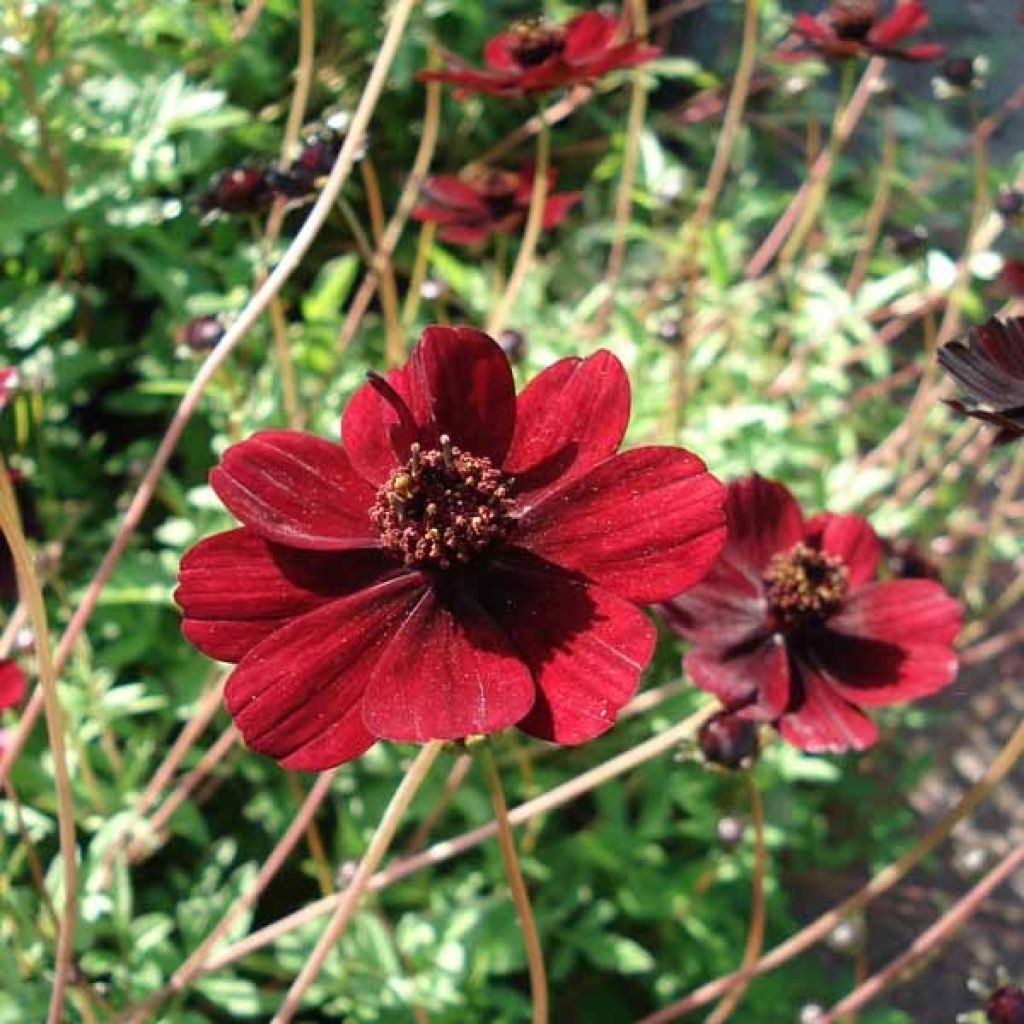

Cosmos atrosanguineus
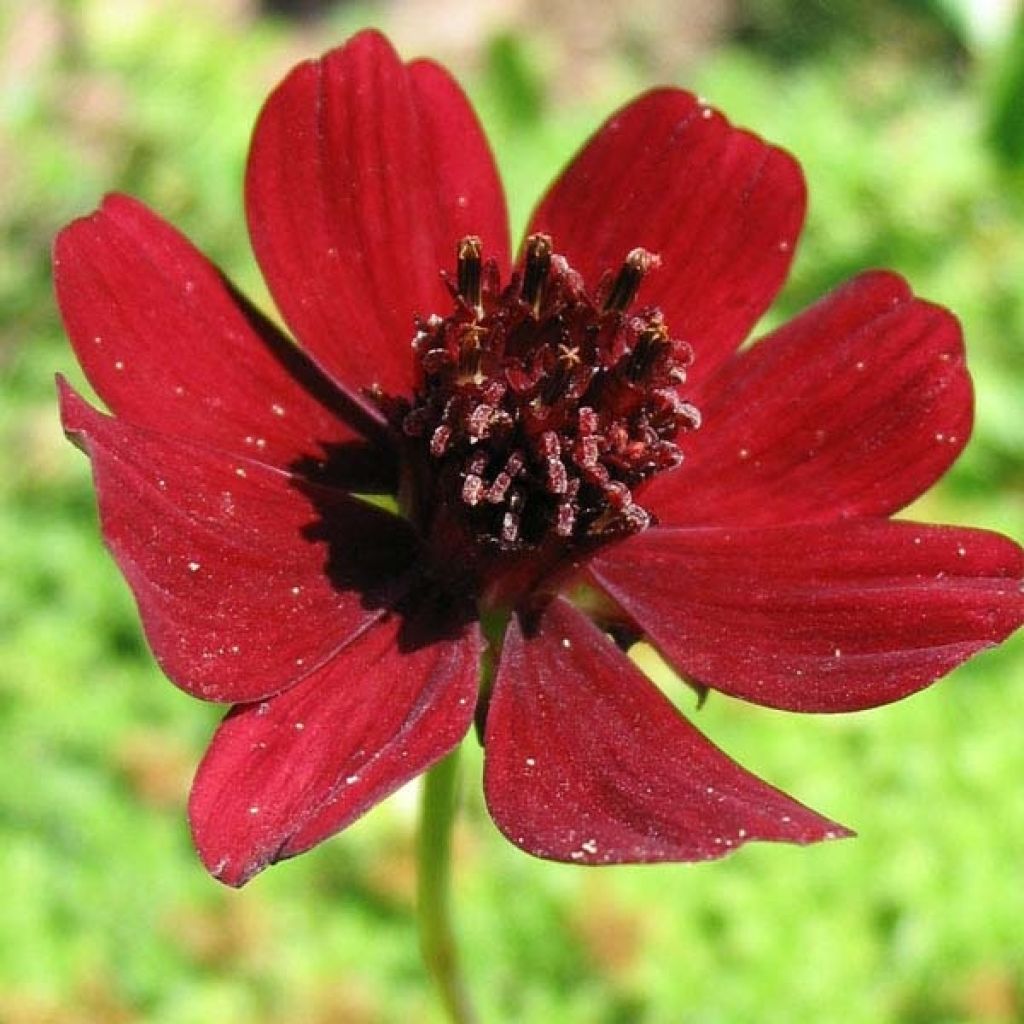

Cosmos atrosanguineus
Cosmos atrosanguineus
Cosmos atrosanguineus
The bulb is of very good quality, the plant is very vigorous, but it suffers a little in full sun. I will try partial shade next year.
Karen, 27/08/2024
This item cannot be shipped to the selected country
Delivery charge from €5.90
More information
Schedule delivery date,
and select date in basket
This plant carries a 6 months recovery warranty
More information
We guarantee the quality of our plants for a full growing cycle, and will replace at our expense any plant that fails to recover under normal climatic and planting conditions.
From €5.90 for pickup delivery and €6.90 for home delivery
Express home delivery from €8.90.
Does this plant fit my garden?
Set up your Plantfit profile →
Description
The Cosmos atrosanguineus, commonly known as the Chocolate Cosmos, is a perennial tuberous plant with unique flowers. These dark and deep hues give them an alluring look throughout the summer. At birth, they are adorned with a beautiful, almost black-purple robe, which will slightly lighten as they bloom until a dark red. Their fragrance also adds a surprising touch. It perfectly reproduces the scent of cocoa and immediately awakens delicious memories.
Cosmos atrosanguineus is a plant from Mexico that requires warm and sunny weather. It is sensitive to temperatures below -5°C. To grow it in cooler climates, you should cultivate it like Dahlias. It's best to dig up the tubers and store them in the winter. You can avoid this extra step by planting it in a pot, allowing you to move it to high-traffic areas to enjoy its Chocolate Cosmos fragrance fully. This plant's scent is so convincing that it earned its name.
Reaching 60 cm (24in) tall and 40 cm (16in) wide. The base consists of most of the plant's leaves. They are deciduous, dark green, and compound. The stems are thin, long, and reddish. They elegantly sway with the breeze. At their top, small heads crown them. They comprise a heart of tubular flowers and 7 to 8 ligules on the periphery, with barely toothed edges. The whole measures a few centimetres (about 5), but the colours attract attention. Brown to black reflections, a range of robust reds, and a few touches of golden yellow scattered in the centre to warm it all up. The palette of shades is subtle and rare; insects do not mistake it: the parade is constant from July to October.
This plant, called cosmos, looks great when planted at the edge of a flowerbed that gets plenty of sunlight. You can either plant them in groups to create a dense and mysterious effect or mix them with other summer flowers, like roses, to add contrast. Additionally, they look great next to silver-grey foliage, which helps bring out their beauty.
If you prefer to keep the cosmos in a pot, make sure to place it in an area with lots of light so you can see the different shades of colour on the petals.
Report an error about the product description
Cosmos atrosanguineus in pictures


Plant habit
Flowering
Foliage
Botanical data
Cosmos
atrosanguineus
Asteraceae
North America
Other Summer bulbs A to Z
Planting and care
To plant your Cosmos atrosanguineus tubers, choose a sunny and well-drained spot, and bury them about 8 cm (3 in) deep. This plant likes rich and moist soil, but not too much water. If you live in a cooler climate, you can hibernate the tuber in frost-free soil during the winter, but make sure it's not too warm. Alternatively, you can grow this Cosmos in a pot, which will allow you to easily protect it from the elements. Remember to water it and fertilise it when growing it in a pot. To keep the plant blooming, remove any faded flowers, which will encourage new ones to grow.
Planting period
Intended location
Care
-
, onOrder confirmed
Reply from on Promesse de fleurs
Bulbs to grow in pots
Haven't found what you were looking for?
Hardiness is the lowest winter temperature a plant can endure without suffering serious damage or even dying. However, hardiness is affected by location (a sheltered area, such as a patio), protection (winter cover) and soil type (hardiness is improved by well-drained soil).

Photo Sharing Terms & Conditions
In order to encourage gardeners to interact and share their experiences, Promesse de fleurs offers various media enabling content to be uploaded onto its Site - in particular via the ‘Photo sharing’ module.
The User agrees to refrain from:
- Posting any content that is illegal, prejudicial, insulting, racist, inciteful to hatred, revisionist, contrary to public decency, that infringes on privacy or on the privacy rights of third parties, in particular the publicity rights of persons and goods, intellectual property rights, or the right to privacy.
- Submitting content on behalf of a third party;
- Impersonate the identity of a third party and/or publish any personal information about a third party;
In general, the User undertakes to refrain from any unethical behaviour.
All Content (in particular text, comments, files, images, photos, videos, creative works, etc.), which may be subject to property or intellectual property rights, image or other private rights, shall remain the property of the User, subject to the limited rights granted by the terms of the licence granted by Promesse de fleurs as stated below. Users are at liberty to publish or not to publish such Content on the Site, notably via the ‘Photo Sharing’ facility, and accept that this Content shall be made public and freely accessible, notably on the Internet.
Users further acknowledge, undertake to have ,and guarantee that they hold all necessary rights and permissions to publish such material on the Site, in particular with regard to the legislation in force pertaining to any privacy, property, intellectual property, image, or contractual rights, or rights of any other nature. By publishing such Content on the Site, Users acknowledge accepting full liability as publishers of the Content within the meaning of the law, and grant Promesse de fleurs, free of charge, an inclusive, worldwide licence for the said Content for the entire duration of its publication, including all reproduction, representation, up/downloading, displaying, performing, transmission, and storage rights.
Users also grant permission for their name to be linked to the Content and accept that this link may not always be made available.
By engaging in posting material, Users consent to their Content becoming automatically accessible on the Internet, in particular on other sites and/or blogs and/or web pages of the Promesse de fleurs site, including in particular social pages and the Promesse de fleurs catalogue.
Users may secure the removal of entrusted content free of charge by issuing a simple request via our contact form.
The flowering period indicated on our website applies to countries and regions located in USDA zone 8 (France, the United Kingdom, Ireland, the Netherlands, etc.)
It will vary according to where you live:
- In zones 9 to 10 (Italy, Spain, Greece, etc.), flowering will occur about 2 to 4 weeks earlier.
- In zones 6 to 7 (Germany, Poland, Slovenia, and lower mountainous regions), flowering will be delayed by 2 to 3 weeks.
- In zone 5 (Central Europe, Scandinavia), blooming will be delayed by 3 to 5 weeks.
In temperate climates, pruning of spring-flowering shrubs (forsythia, spireas, etc.) should be done just after flowering.
Pruning of summer-flowering shrubs (Indian Lilac, Perovskia, etc.) can be done in winter or spring.
In cold regions as well as with frost-sensitive plants, avoid pruning too early when severe frosts may still occur.
The planting period indicated on our website applies to countries and regions located in USDA zone 8 (France, United Kingdom, Ireland, Netherlands).
It will vary according to where you live:
- In Mediterranean zones (Marseille, Madrid, Milan, etc.), autumn and winter are the best planting periods.
- In continental zones (Strasbourg, Munich, Vienna, etc.), delay planting by 2 to 3 weeks in spring and bring it forward by 2 to 4 weeks in autumn.
- In mountainous regions (the Alps, Pyrenees, Carpathians, etc.), it is best to plant in late spring (May-June) or late summer (August-September).
The harvesting period indicated on our website applies to countries and regions in USDA zone 8 (France, England, Ireland, the Netherlands).
In colder areas (Scandinavia, Poland, Austria...) fruit and vegetable harvests are likely to be delayed by 3-4 weeks.
In warmer areas (Italy, Spain, Greece, etc.), harvesting will probably take place earlier, depending on weather conditions.
The sowing periods indicated on our website apply to countries and regions within USDA Zone 8 (France, UK, Ireland, Netherlands).
In colder areas (Scandinavia, Poland, Austria...), delay any outdoor sowing by 3-4 weeks, or sow under glass.
In warmer climes (Italy, Spain, Greece, etc.), bring outdoor sowing forward by a few weeks.

































